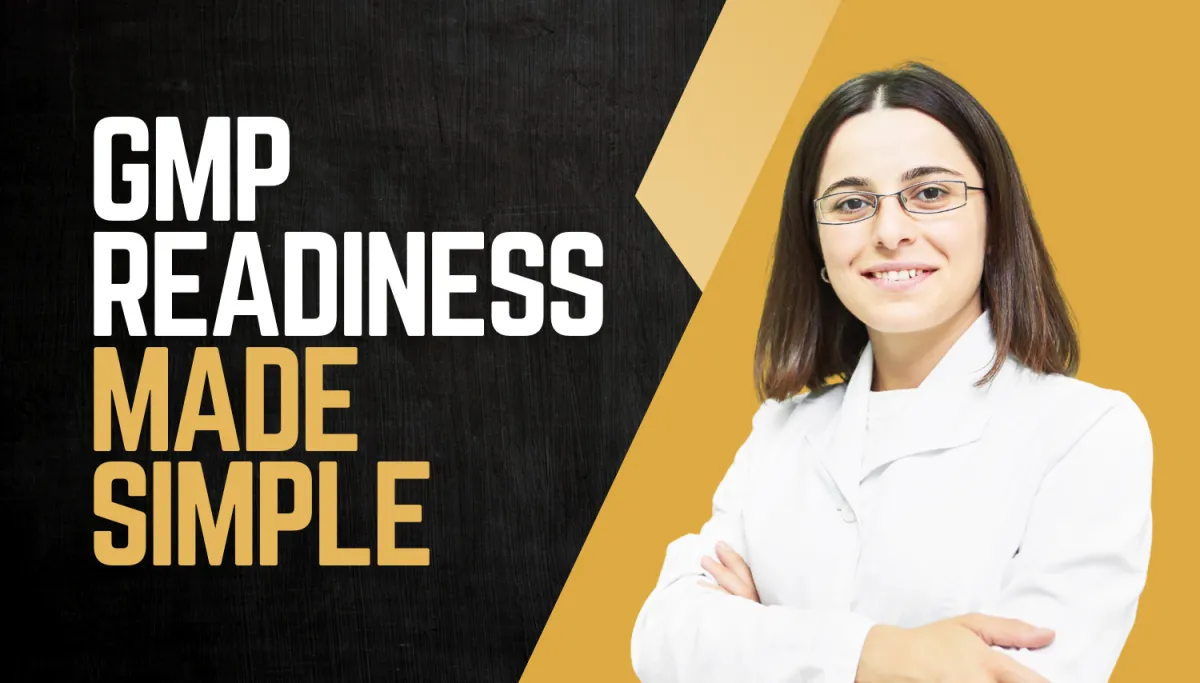
GMP Readiness Made Simple
For companies manufacturing therapeutic goods, biotechnology products, or conducting analytical testing, Good Manufacturing Practice (GMP) compliance is a legal and commercial necessity. GMP is the global framework of principles and procedures designed to ensure products are consistently produced and controlled according to quality standards. In Australia, the Therapeutic Goods Administration (TGA) enforces GMP compliance for manufacturers of medicines, active pharmaceutical ingredients, and certain medical devices.
Yet for many organisations, achieving GMP readiness can feel overwhelming. The regulations are dense, the terminology unfamiliar, and the documentation requirements extensive. However, with the right approach, GMP readiness can be achieved without unnecessary stress or disruption to business operations. This article will break down the essential steps to prepare for GMP compliance and explain how we at Quality Systems Now aim to make the process simple, structured, and achievable.
Understanding GMP Readiness
GMP readiness refers to the state in which an organisation can demonstrate full compliance with relevant GMP requirements—both in documentation and in practice—at any time. This readiness is essential not only for passing an initial TGA or overseas regulatory inspection, but also for maintaining compliance during routine and unannounced audits.
In practical terms, GMP readiness involves:
Having a documented Quality Management System (QMS) aligned with applicable GMP codes.
Ensuring facilities, equipment, and processes are qualified, validated, and maintained.
Training all relevant personnel in GMP principles and role-specific requirements.
Maintaining complete, accurate, and traceable records for all manufacturing and testing activities.
Implementing systems for deviation management, change control, corrective actions, and continuous improvement.
Without these fundamentals in place, companies risk failed inspections, production stoppages, and potential loss of market access.
The Consequences of Poor Preparation
A lack of GMP readiness can have significant business impacts. Common consequences include:
Failed Inspections – Non-compliance findings can delay or prevent certification, halting product release.
Costly Remediation Projects – Addressing deficiencies after a failed audit is typically more expensive and disruptive than proactive preparation.
Product Recalls – Gaps in process control or documentation can lead to recalls, damaging brand trust.
Regulatory Sanctions – In severe cases, regulatory bodies can impose fines, suspend licences, or issue public warnings.
These outcomes are avoidable with proper planning, structured systems, and ongoing monitoring.
Steps to Achieving GMP Readiness
Step 1: Conduct a Gap Assessment
A GMP gap assessment is the starting point for any readiness program. This structured review compares current practices against the applicable GMP code (e.g., PIC/S Guide to GMP in Australia). It identifies strengths, weaknesses, and priority areas for improvement.
Step 2: Implement a Fit-for-Purpose QMS
Your Quality Management System is the backbone of GMP compliance. A fit-for-purpose QMS is tailored to your organisation’s size, scope, and products while still meeting all regulatory requirements. Core elements include document control, training, deviation management, change control, supplier qualification, and internal audits.
Step 3: Validate Processes and Equipment
Validation ensures that manufacturing and testing processes consistently produce results that meet predetermined quality attributes. This includes Installation Qualification (IQ), Operational Qualification (OQ), and Performance Qualification (PQ) for equipment, as well as process and cleaning validations.
Step 4: Train Your Team
Personnel competence is central to GMP compliance. All staff should receive both general GMP training and role-specific instruction. Training must be documented, regularly refreshed, and evaluated for effectiveness.
Step 5: Maintain Accurate Documentation
GMP operates on the principle of “if it isn’t documented, it didn’t happen.” Every manufacturing step, test result, and decision must be recorded in a controlled and traceable manner. This documentation is often the first thing auditors request during inspections.
Step 6: Conduct Mock Inspections
Simulated inspections prepare staff for the real thing and highlight areas that may be overlooked during routine operations. These exercises help ensure that compliance is embedded in daily practice, not just during audit preparation.
Common Myths About GMP Readiness
Myth: GMP only matters before an inspection.
In reality, GMP compliance is continuous. Auditors often look at records from months or years prior, so readiness must be maintained at all times.Myth: Small companies get more leniency.
Regulatory requirements apply equally, regardless of company size. Smaller businesses must still meet all relevant standards.Myth: GMP is purely about paperwork.
While documentation is critical, GMP also requires robust processes, well-maintained facilities, and a strong quality culture.
How Quality Systems Now Simplifies GMP Readiness
At Quality Systems Now, we specialise in making GMP readiness achievable for companies at every stage of growth. Our approach is practical, efficient, and focused on building sustainable compliance systems.
We provide:
Comprehensive GMP gap assessments and prioritised action plans.
QMS design and implementation that integrates seamlessly into existing operations.
Validation planning and execution for equipment, processes, and methods.
Customised training programs for staff at all levels.
Mock inspections to build confidence and uncover hidden compliance risks.
Ongoing compliance support to maintain readiness year-round.
Our clients benefit from reduced risk of non-compliance, faster audit approvals, and smoother market entry for new products.
Building a Culture of Continuous Readiness
The simplest way to stay GMP-ready is to make compliance part of the company’s daily operations rather than a periodic project. This requires leadership commitment, staff engagement, and the integration of quality principles into every decision-making process.
When compliance becomes a shared responsibility across departments—not just the quality team—the organisation is better equipped to handle inspections, product launches, and regulatory changes.
Achieve GMP Readiness with Quality Systems Now
GMP readiness does not need to be an overwhelming or last-minute scramble. By starting with a clear understanding of requirements, conducting a thorough gap assessment, and implementing sustainable systems, any organisation can meet and maintain compliance.
The key is to approach GMP readiness as a continuous state, not a temporary goal. This mindset not only satisfies regulators but also strengthens product quality, operational efficiency, and customer trust.
Quality Systems Now exists to make GMP readiness straightforward, achievable, and sustainable. With our expertise, your team can focus on what it does best—innovating and delivering high-quality products—while we ensure your compliance foundations are strong, stable, and ready for any inspection.